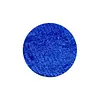Terra Moons Cosmetics Shimmer Eyeshadow Versus Creer Beaute Miracle Romance Crisis Moon Compact Eyeshadow Flatstyle
What's inside
What's inside
 Key Ingredients
Key Ingredients

 Benefits
Benefits

 Concerns
Concerns

 Ingredients Side-by-side
Ingredients Side-by-side

Mica
Cosmetic ColorantKaolin
AbrasiveCaprylic/Capric Triglyceride
MaskingCopernicia Cerifera Wax
Zinc Stearate
Cosmetic ColorantMagnesium Myristate
Lysine
Skin ConditioningPhenoxyethanol
PreservativeSilica
AbrasiveBoron Nitride
AbsorbentDimethicone
EmollientIsododecane
EmollientMagnesium Stearate
Cosmetic ColorantZinc Oxide
Cosmetic ColorantHydrogenated Polyisobutene
EmollientIron Oxides
Platinum Powder
AbrasiveTin Oxide
AbrasiveCI 77510
Cosmetic ColorantChromium Hydroxide Green
Ultramarines
CI 77742
Cosmetic ColorantCaprylyl Glycol
EmollientHexylene Glycol
EmulsifyingZinc Sulfide
Mica, Kaolin, Caprylic/Capric Triglyceride, Copernicia Cerifera Wax, Zinc Stearate, Magnesium Myristate, Lysine, Phenoxyethanol, Silica, Boron Nitride, Dimethicone, Isododecane, Magnesium Stearate, Zinc Oxide, Hydrogenated Polyisobutene, Iron Oxides, Platinum Powder, Tin Oxide, CI 77510, Chromium Hydroxide Green, Ultramarines, CI 77742, Caprylyl Glycol, Hexylene Glycol, Zinc Sulfide
Ingredients Explained
These ingredients are found in both products.
Ingredients higher up in an ingredient list are typically present in a larger amount.
This ingredient is an emollient, solvent, and texture enhancer. It is considered a skin-softener by helping the skin prevent moisture loss.
It helps thicken a product's formula and makes it easier to spread by dissolving clumping compounds.
Caprylic Triglyceride is made by combining glycerin with coconut oil, forming a clear liquid.
While there is an assumption Caprylic Triglyceride can clog pores due to it being derived from coconut oil, there is no research supporting this.
Learn more about Caprylic/Capric TriglycerideIsododecane is a fragrance, emollient, and solvent.
As an emollient, it helps your skin stay soft and hydrated. Emollients help trap moisture into your skin.
Isododecane's role as a solvent makes it a great texture enhancer. It spreads smoothly on skin and does not leave a sticky feeling behind. Isododecane also helps prevent color transfer in makeup products.
Isododecane is not absorbed into skin.
Learn more about IsododecaneMagnesium Stearate is a salt that is 2 parts stearic acid and 1 part magnesium.
It is a white powder that can be used to add bulk and color to products by binding to oil ingredients.
Mica is a naturally occurring mineral used to add shimmer and color in cosmetics. It can also help improve the texture of a product or give it an opaque, white/silver color.
Serecite is the name for very fine but ragged grains of mica.
This ingredient is often coated with metal oxides like titanium dioxide. Trace amounts of heavy metals may be found in mica, but these metals are not harmful in our personal products.
Mica has been used since prehistoric times throughout the world. Ancient Egyptian, Indian, Greek, Roman, Aztec, and Chinese civilizations have used mica.
Learn more about MicaPhenoxyethanol is a preservative that has germicide, antimicrobial, and aromatic properties. Studies show that phenoxyethanol can prevent microbial growth. By itself, it has a scent that is similar to that of a rose.
It's often used in formulations along with Caprylyl Glycol to preserve the shelf life of products.
Tin Oxide is an inorganic oxide used to add opacity and volume to a product. In nature, it is already found in mineral form. The main ore of tin is an opaque and shiny mineral called casseterite.
Tin Oxide helps remove translucency in a product, or make it more opaque. Besides adding opacity, tin oxide is used for bulking to add volume.
Ultramarines are a group of synthetic pigments. They can be either blue, green, pink, red, or violet.
Mineral sources are often used to create ultramarines. The FDA regulates this ingredient due to it potentially containing (trace) amounts of heavy metals.